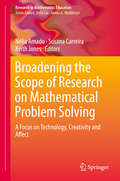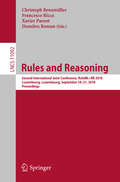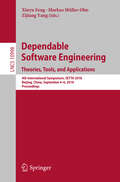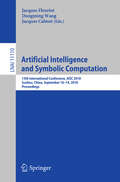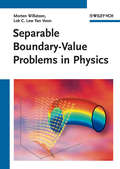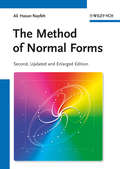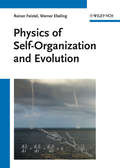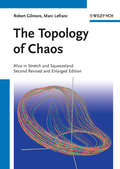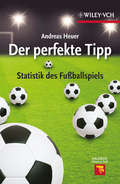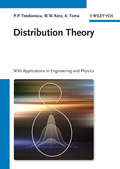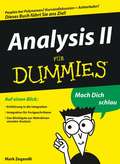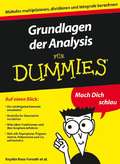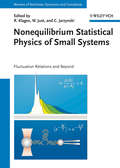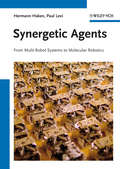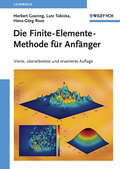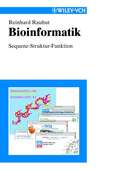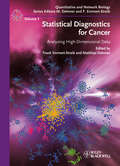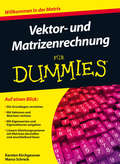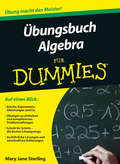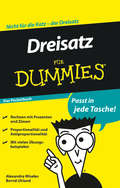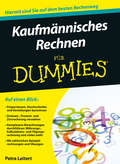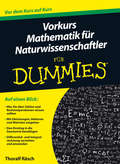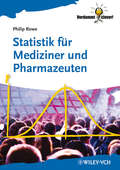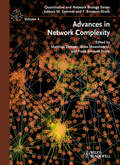- Table View
- List View
Broadening the Scope of Research on Mathematical Problem Solving: A Focus on Technology, Creativity and Affect (Research in Mathematics Education)
by Keith Jones Susana Carreira Nélia AmadoThe innovative volume seeks to broaden the scope of research on mathematical problem solving in different educational environments. It brings together contributions not only from leading researchers, but also highlights collaborations with younger researchers to broadly explore mathematical problem-solving across many fields: mathematics education, psychology of education, technology education, mathematics popularization, and more. The volume’s three major themes—technology, creativity, and affect—represent key issues that are crucially embedded in the activity of problem solving in mathematics teaching and learning, both within the school setting and beyond the school. Through the book’s new pedagogical perspectives on these themes, it advances the field of research towards a more comprehensive approach on mathematical problem solving. Broadening the Scope of Research on Mathematical Problem Solving will prove to be a valuable resource for researchers and teachers interested in mathematical problem solving, as well as researchers and teachers interested in technology, creativity, and affect.
Rules and Reasoning: Second International Joint Conference, RuleML+RR 2018, Luxembourg, Luxembourg, September 18–21, 2018, Proceedings (Lecture Notes in Computer Science #11092)
by Dumitru Roman Christoph Benzmüller Francesco Ricca Xavier ParentThis book constitutes the proceedings of the International Joint Conference on Rules and Reasoning, RuleML+RR 2018, held in Luxembourg during September 2018. This is the second conference of a new series, joining the efforts of two existing conference series, namely “RuleML” (International Web Rule Symposium) and “RR” (Web Reasoning and Rule Systems).The 10 full research papers presented together with 5 long technical communications and 7 short papers were carefully reviewed and selected from 33 submissions.
Dependable Software Engineering. Theories, Tools, and Applications: 4th International Symposium, Setta 2018, Beijing, China, September 4-6, 2018, Proceedings (Lecture Notes in Computer Science #10998)
by Xinyu Feng Markus Müller-Olm Zijiang YangThis book constitutes the proceedings of the Third International Symposium on Dependable Software Engineering: Theories, Tools, and Applications, SETTA 2018, held in Beijing, China, in September 2018. The 9 full papers presented together with 3 short papers were carefully reviewed and selected from 22 submissions. The purpose of SETTA is to provide an international forum for researchers and practitioners to share cutting-edge advancements and strengthen collaborations in the field of formal methods and its interoperability with software engineering for building reliable, safe, secure, and smart systems.
Artificial Intelligence and Symbolic Computation: 13th International Conference, AISC 2018, Suzhou, China, September 16–19, 2018, Proceedings (Lecture Notes in Computer Science #11110)
by Jacques Fleuriot Dongming Wang Jacques CalmetThis book constitutes the refereed proceedings of the 13th International Conference on Artificial Intelligence and Symbolic Computation, AISC 2018, held in Suzhou, China, in September 2018. The 13 full papers presented together with 5 short and 2 invited papers were carefully reviewed and selected from 31 submissions. The AISC conference is an important forum when it comes to ensuring that ideas, theoretical insights, methods and results from traditional AI can be discussed and showcased, while fostering new links with other areas of AI such as probabilistic reasoning and deep learning.
Separable Boundary-Value Problems in Physics
by Morten Willatzen Lok C. Lew Yan VoonInnovative developments in science and technology require a thorough knowledge of applied mathematics, particularly in the field of differential equations and special functions. These are relevant in modeling and computing applications of electromagnetic theory and quantum theory, e.g. in photonics and nanotechnology. The problem of solving partial differential equations remains an important topic that is taught at both the undergraduate and graduate level. Separable Boundary-Value Problems in Physics is an accessible and comprehensive treatment of partial differential equations in mathematical physics in a variety of coordinate systems and geometry and their solutions, including a differential geometric formulation, using the method of separation of variables. With problems and modern examples from the fields of nano-technology and other areas of physics. The fluency of the text and the high quality of graphics make the topic easy accessible. The organization of the content by coordinate systems rather than by equation types is unique and offers an easy access. The authors consider recent research results which have led to a much increased pedagogical understanding of not just this topic but of many other related topics in mathematical physics, and which like the explicit discussion on differential geometry shows - yet have not been treated in the older texts. To the benefit of the reader, a summary presents a convenient overview on all special functions covered. Homework problems are included as well as numerical algorithms for computing special functions. Thus this book can serve as a reference text for advanced undergraduate students, as a textbook for graduate level courses, and as a self-study book and reference manual for physicists, theoretically oriented engineers and traditional mathematicians.
The Method of Normal Forms
by Ali H. NayfehIn this introductory treatment Ali Nayfeh presents different concepts from dynamical systems theory and nonlinear dynamics in a rigorous yet plan way. He systematically introduces models and techniques and states the relevant ranges of validity and applicability. The reader is provided with a clear operational framework for consciously use rather than focused on the underlying mathematical apparatus. The exposition is largely by means of examples, dealt with up to their final outcome. For most of the examples, the results obtained with the method of normal forms are equivalent to those obtained with other perturbation methods, such as the method of multiple scales and the method of averaging. The previous edition had a remarkable success by researchers from all over the world working in the area of nonlinear dynamics and their applications in engineering. Additions to this new edition concern major topics of current interest. In particular, the author added three new chapters dedicated to Maps, Bifurcations of Continuous Systems, and Retarded Systems. In particular the latter has become of major importance in several applications, both in mechanics and in different areas. Accessible to engineers and applied scientist involved with nonlinear dynamics and their applications in a wide variety of fields. It is assumed that readers have a knowledge of basic calculus as well as the elementary properties of ordinary-differential equations.
Physics of Self-Organization and Evolution
by Werner Ebeling Rainer FeistelThis thoroughly updated version of the German authoritative work on self-organization has been completely rewritten by internationally renowned experts and experienced book authors to also include a review of more recent literature. It retains the original enthusiasm and fascination surrounding thermodynamic systems far from equilibrium, synergetics, and the origin of life, representing an easily readable book and tutorial on this exciting field. The book is unique in covering in detail the experimental and theoretical fundamentals of self-organizing systems as well as such selected features as random processes, structural networks and multistable systems, while focusing on the physical and theoretical modeling of natural selection and evolution processes. The authors take examples from physics, chemistry, biology and social systems, and include results hitherto unpublished in English. The result is a one-stop resource relevant for students and scientists in physics or related interdisciplinary fields, including mathematical physics, biophysics, information science and nanotechnology.
The Topology of Chaos: Alice in Stretch and Squeezeland
by Robert Gilmore Marc LefrancA highly valued resource for those who wish to move from the introductory and preliminary understandings and the measurement of chaotic behavior to a more sophisticated and precise understanding of chaotic systems. <P><P>The authors provide a deep understanding of the structure of strange attractors, how they are classified, and how the information required to identify and classify a strange attractor can be extracted from experimental data. In its first edition, the Topology of Chaos has been a valuable resource for physicist and mathematicians interested in the topological analysis of dynamical systems. Since its publication in 2002, important theoretical and experimental advances have put the topological analysis program on a firmer basis. This second edition includes relevant results and connects the material to other recent developments. Following significant improvements will be included: * A gentler introduction to the topological analysis of chaotic systems for the non expert which introduces the problems and questions that one commonly encounters when observing a chaotic dynamics and which are well addressed by a topological approach: existence of unstable periodic orbits, bifurcation sequences, multistability etc. * A new chapter is devoted to bounding tori which are essential for achieving generality as well as for understanding the influence of boundary conditions. * The new edition also reflects the progress which had been made towards extending topological analysis to higher-dimensional systems by proposing a new formalism where evolving triangulations replace braids. * There has also been much progress in the understanding of what is a good representation of a chaotic system, and therefore a new chapter is devoted to embeddings. * The chapter on topological analysis program will be expanded to cover traditional measures of chaos. This will help to connect those readers who are familiar with those measures and tests to the more sophisticated methodologies discussed in detail in this book. * The addition of the Appendix with both frequently asked and open questions with answers gathers the most essential points readers should keep in mind and guides to corresponding sections in the book. This will be of great help to those who want to selectively dive into the book and its treatments rather than reading it cover to cover. What makes this book special is its attempt to classify real physical systems (e.g. lasers) using topological techniques applied to real date (e.g. time series). Hence it has become the experimenter?s guidebook to reliable and sophisticated studies of experimental data for comparison with candidate relevant theoretical models, inevitable to physicists, mathematicians, and engineers studying low-dimensional chaotic systems.
Sandburgen, Staus und Seifenblasen (Erlebnis Wissenschaft)
by Oliver MorschWarum bilden sich Staus aus dem Nichts und lösen sich genauso unverhofft wieder auf? Warum fließt Sand und kann dennoch hart wie Beton sein? Die physikalischen Gesetzmäßigkeiten hinter diesen und anderen Ereignissen sind spannend zu entdecken.
Der perfekte Tipp: Statistik des Fußballspiels (Erlebnis Wissenschaft)
by Andreas HeuerHow predictable is a soccer game, what good does the change of a coach, which role does the salary of soccer players have? Andreas Heuer surprises us with his analysis of soccer statistics. He shows that many beloved soccer sayings will vanish into thin air at a closer look.
Distribution Theory
by Petre Teodorescu Antonela Toma Wilhelm W. KecsIn this comprehensive monograph, the authors apply modern mathematical methods to the study of mechanical and physical phenomena or techniques in acoustics, optics, and electrostatics, where classical mathematical tools fail.They present a general method of approaching problems, pointing out different aspects and difficulties that may occur. With respect to the theory of distributions, only the results and the principle theorems are given as well as some mathematical results. The book also systematically deals with a large number of applications to problems of general Newtonian mechanics, as well as to problems pertaining to the mechanics of deformable solids and physics. Special attention is placed upon the introduction of corresponding mathematical models.Addressed to a wide circle of readers who use mathematical methods in their work: applied mathematicians, engineers in various branches, as well as physicists, while also benefiting students in various fields.
Analysis II für Dummies (Für Dummies)
by Mark ZegarelliNach der Analysis ist vor der Analysis. Dies ist das richtige Buch für Sie, wenn es in der Analysis ein wenig mehr sein soll oder auch muss. Mark Zegarelli erklärt Ihnen, was Sie zur infiniten Integration und zu differential- und multivariablen Gleichungen wissen müssen. Er fährt mit Taylorreihe und Substitutionen fort und führt Sie auch in die Dritte Dimension der Analysis; und das ist lange noch nicht alles! Im Ton verbindlich, in der Sache kompetent führt er Ihre Analysiskenntnisse auf eine neue Stufe.
Grundlagen der Analysis für Dummies (Für Dummies)
by Deborah J. Rumsey Michelle Rose Gilman Christopher Burger Krystle Rose ForsethAuf Kriegsfuß mit der Analysis stehen, ist keine Schande. Wenn man sie aber beherrschen muss, hilft das nicht viel. Aber es gibt Abhilfe: Dieses Buch erklärt Ihnen die Grundlagen der Analysis und liefert Ihnen so ein Fundament, auf dem Sie Ihre weiteren Rechenkünste aufbauen können. So erfahren Sie, was Sie über Trigonometrie und Analytische Geometrie wissen müssen, um in der Analysis bestehen zu können. Außerdem erklären Ihnen die Autoren die ersten Schritte in Differentation und Integration und zur Auswertung der Grenzwerte. So gerüstet, können Sie sich getrost der Analysis stellen.
Nonequilibrium Statistical Physics of Small Systems
by Heinz Georg Schuster Christopher Jarzynski Rainer Klages Wolfram JustThis book offers a comprehensive picture of nonequilibrium phenomena in nanoscale systems. Written by internationally recognized experts in the field, this book strikes a balance between theory and experiment, and includes in-depth introductions to nonequilibrium fluctuation relations, nonlinear dynamics and transport, single molecule experiments, and molecular diffusion in nanopores.The authors explore the application of these concepts to nano- and biosystems by cross-linking key methods and ideas from nonequilibrium statistical physics, thermodynamics, stochastic theory, and dynamical systems. By providing an up-to-date survey of small systems physics, the text serves as both a valuable reference for experienced researchers and as an ideal starting point for graduate-level students entering this newly emerging research field.
Synergetic Agents: From Multi-Robot Systems to Molecular Robotics
by Paul Levi Hermann HakenThis book addresses both multi robot systems and miniaturization to the nanoscale from a unifying point of view, but without leaving aside typical particularities of either. The unifying aspect is based on the concept of information minimization whose precise formulation is the Haken-Levi-principle. The authors introduce basic concepts of multi-component self-organizing systems such as order parameters (well known from equilibrium and non-equilibrium phase transitions) and the slaving principle (which establishes a link to dynamical systems). Among explicit examples is the docking manoeuvre of two robots in two and three dimensions. The second part of the book deals with the rather recently arising field of molecular robotics. It is particularly here where nature has become a highly influential teacher for the construction of robots. In living biological cells astounding phenomena occur: there are molecules (proteins) that literally walk on polymer strands and transport loads that are heavier than their carriers, or molecules that, by joint action, contract muscles. The book provides the reader with an insight into these phenomena, especially by a detailed theoretical treatment of the molecular mechanism of muscle contraction. At the molecular level, for an appropriate approach the use of quantum theory is indispensable. The authors introduce and use it in a form that avoids all the clumsy calculations of wave-functions. They present a model which is based on an elementary version of quantum field theory and allows taking into account the impact of the surrounding on the quantum mechanical activity of a single molecule. By presenting explicit and pedagogical examples, the reader gets acquainted with the appropriate modelling of the walking behaviour of single molecular robots and their collective behaviour. The further development of multi-robot systems and particularly of molecular robots will require the cooperation of a variety of disciplines. Therefore the book appeals to a wide audience including researchers, instructors, and advanced graduate students.
Die Finite-Elemente-Methode für Anfänger
by Herbert Goering Hans-Görg Roos Lutz TobiskaDie Finite-Elemente-Methode ist eine grundlegende mathematische Technik zur Behandlung von Differentialgleichungs- und Variationsproblemen, die in Physik und Mechanik, im Bau- und Ingenieurwesen sowie in Elektrotechnik und Mechatronik auftreten. Das vorliegende Buch ist die vierte Auflage des bewährten Standardwerks der drei Autoren. Es ist speziell für Naturwissenschaftler und Ingenieure geeignet, die die mathematischen Grundlagen der Methode kennenlernen wollen. Das Lehrbuch wurde gründlich überarbeitet, zudem u.a. durch Hinweise auf unstetige Galerkin-Methoden und verschiedene Varianten von a posteriori Fehlerabschätzungen sowie Literatur- und Softwareverweise auf den aktuellen Stand gebracht.
Bioinformatik: Sequenz - Struktur - Funktion
by Reinhard RauhutDie Bioinformatik ist für die Weiterentwicklung der modernen Biowissenschaften von herausragender Bedeutung. In Grundzügen wird sie Teil einer jeden Ausbildung zum Biologen oder Biochemiker werden. Obwohl die Zahl der angebotenen Lehrveranstaltungen rapide zunimmt, gibt es bisher auf dem deutschsprachigen Markt noch kein Lehrbuch zu dieser Thematik. Das vorliegende Werk schließt diese Lücke. Reich bebildert und mit relativ wenig mathematischem Formelaufwand werden die Grundlagen der Bioinformatik gut verständlich aufbereitet. Die Themenauswahl ist dabei auf die Bedürfnisse der experimentell tätigen Biochemiker, Biologen und Mediziner abgestimmt. Auf die wichtigsten Hilfsmittel, die das Internet kostenlos bietet, wird ausführlich eingegangen. Die Inhalte werden in der Abfolge Sequenz - Struktur - Funktion entwickelt: · Sequenzdatenbanken · Genomprojekte · Proteinorientierte Datenbanken · Techniken des eukaryontischen Genomassembly · Strukturdatenbanken · Expressionsanalyse mit DNA Chips · Proteomics · Phylogenie und Sequenz · DNA Computing Die Bioinformatik betrifft die tägliche Arbeit eines jeden Biowissenschaftlers. Es sollte sich daher jeder mit den grundlegenden Ansätzen vertraut machen.
Statistical Diagnostics for Cancer: Analyzing High-Dimensional Data
by Matthias Dehmer Frank Emmert-StreibThis ready reference discusses different methods for statistically analyzing and validating data created with high-throughput methods. As opposed to other titles, this book focusses on systems approaches, meaning that no single gene or protein forms the basis of the analysis but rather a more or less complex biological network. From a methodological point of view, the well balanced contributions describe a variety of modern supervised and unsupervised statistical methods applied to various large-scale datasets from genomics and genetics experiments. Furthermore, since the availability of sufficient computer power in recent years has shifted attention from parametric to nonparametric methods, the methods presented here make use of such computer-intensive approaches as Bootstrap, Markov Chain Monte Carlo or general resampling methods. Finally, due to the large amount of information available in public databases, a chapter on Bayesian methods is included, which also provides a systematic means to integrate this information. A welcome guide for mathematicians and the medical and basic research communities.
Vektor- und Matrizenrechnung fur Dummies (Für Dummies)
by Marco Schreck Karsten KirchgessnerWas Sie wissen müssen – von Abbildungsmatrix bis Zylinderkoordinaten Ganz egal, was Sie machen wollen, in der Mathematik führt ab einem gewissen Niveau kein Weg an der Vektorund Matrizenrechnung vorbei. Karsten Kirchgessner und Marco Schreck führen Sie in dieses Thema ein. Sie erklären Ihnen, was Vektoren und Matrizen überhaupt sind und wie Sie möglichst unkompliziert mit ihnen rechnen. Außerdem erfahren Sie, was Sie über Eigenwerte und Eigenvektoren wissen sollten, wie Sie lineare Gleichungssysteme lösen und vieles mehr. So lernen Sie pfeilschnell, in diese Tiefen der Mathematik einzudringen. Besonderer Wert wird hierbei auf geschickte Ansätze und Tricks gelegt, die den Rechenaufwand und Komplexitätsgrad einer Aufgabenstellung reduzieren, sodass Sie insbesondere in Prüfungen so schnell wie möglich zur korrekten Lösung gelangen.
Ubungsbuch Algebra fur Dummies (Für Dummies)
by Mary Jane SterlingAlgebra verstehen, üben und umsetzen Müssen Sie sich – ob Sie nun wollen oder nicht – in Schule, Beruf oder Studium mit Algebra beschäftigen? Dann hilft Ihnen dieses Buch. Mit Hunderten von Aufgaben, aus - führlichen Lösungen und Erklärungen führt Sie Mary Jane Sterling in die Welt der Algebra ein. Die Autorin erklärt Ihnen noch einmal die grundlegenden Regeln zum Rechnen mit Brüchen, Wurzeln und Co., wie Sie lineare und quadratische Gleichungen lösen und Textaufgaben bewältigen. Sie finden außerdem Übungen zur grafischen Darstellung von Geraden und Parabeln.
Dreisatz fur Dummies Das Pocketbuch (Für Dummies)
by Alexandra Miseles Bernd UhlandWer hat ihn nicht gelernt, den Dreisatz? Aber wie fit sind Sie in diesem Thema? Dabei ist Dreisatzrechnen sehr praktisch und einmal begriffen, erleichtert es den Umgang mit der Mathematik ungemein. Bernd Uhland und Alexandra Miseles bringen Ihnen in diesem kleinen Buch schnell bei, was Sie über den Dreisatz wissen sollten. Sie erklären Ihnen das grundlegende Rechenverfahren und zeigen Ihnen, was es mit zusammengesetzten Dreisätzen auf sich hat. Natürlich kommen auch praktische Anwendungen wie Prozentrechnung nicht zu kurz, und zum Schluss erläutern die Autoren auch noch fortgeschrittene Themen wie Durchschnitts-, Verteilungs-, Verhältnis- und Mischungsrechnung.
Kaufmannisches Rechnen fur Dummies (Für Dummies)
by Petra LeitertDreisatz, Prozentrechnen und Co. - wie ging das noch gleich? Wenn Sie einen kaufmännischen Beruf anstreben oder ausüben, führt kein Weg am Kaufmännischen Rechnen vorbei. Aber keine Sorge, auch wenn Sie kein Mathe-Genie sind, werden Berechnungen wie Proportions-, Durchschnitts-, Verteilungs- oder Zinsrechnung bald kein Problem mehr für Sie sein. Petra Leitert erklärt Ihnen leicht verständlich und Schritt für Schritt alle wichtigen Rechenarten, die Sie benötigen. So erfahren Sie alles über Abschreibungen, Währungsrechnung, Deckungsbeiträge und vieles mehr. Auch komplexere Berechnungen wie Tilgungsrechnung, Zinseszinsrechnung, Berechnungen bei Geldanlagen und statistisches Rechnen kommen nicht zu kurz. Zahlreiche Beispielrechnungen, Übungen und Tipps zur Arbeit mit Excel runden dieses Buch ab.
Vorkurs Mathematik fur Naturwissenschaftler fur Dummies (Für Dummies)
by Thoralf RäschViele angehende Studenten haben gehörigen Respekt vor der Mathematik, wenn sie ein naturwissenschaftliches Studium beginnen; und das zu Recht. Aber Hilfe naht: Thoralf Räsch bringt Sie, egal wo Sie auf der Schule waren und wo Sie studieren werden, auf den Stand, dass Sie der Mathematikvorlesung im ersten Semester folgen können. Er erklärt Ihnen noch einmal die Grundrechenarten, zeigt, wie man mit Brüchen, Potenzen und Logarithmen rechnet, erläutert komplexe Zahlen, Gleichungen, Vektoren und Matrizen. Er hilft Ihnen, Folgen, Reihen und Funktionen zu verstehen, und unterstützt Sie bei Ihren ersten Schritten in der Geometrie, der Differential- und Integralrechnung. So ist dies das perfekte Auffrischungsbuch vor Ihrem Studium.
Statistik für Mediziner und Pharmazeuten
by Philip RoweGute Daten + gute Statistik = gute Ergebnisse! Mit diesem Buch haben falsche Statistiken keine Chance mehr. Übersichtlich gegliedert in 6 Teile mit zusammen 20 Kapiteln werden hier alle wichtigen Typen von Daten und die Verfahren zu deren Auswertung erklärt. Die erklärte Maxime des Autors ist es, dass sich eine statistische Auswertung immer an der Art und Qualität der Daten orientieren muss, damit diese nicht fehl- oder überinterpretiert werden. Komplizierte Mathematik ist dabei weder nötig noch erwünscht, denn meistens sind die einfachsten Verfahren die aussagekräftigsten. Ein positiver Lerneffekt stellt sich bereits nach wenigen Seiten ein, denn hier werden genau die Fragen gestellt (und beantwortet!), mit denen ein angehender Mediziner oder Pharmazeut während der Ausbildung konfrontiert wird. Mit seinem ungezwungenen und direkten Stil gelingt es dem Autor, dass die Statistik vom ungeliebten Kind zum effizienten Werkzeug wird, auch ohne mathematische Begabung beim Leser. * Leicht verständliche Texte (fast) ohne Formeln * Alle Beispiele kommen aus der Medizin oder der Pharmazie * Warnhinweise auf häufi ge Fehler und auf den unsachgemäßen Einsatz von Statistiken Als leicht verständliche Einführung in die statistischen Grundlagen und Verfahren, die in der Medizin und in der Pharmazie eingesetzt werden, ist dieses Buch bestens geeignet für alle, die eine Ausbildung im medizinischpharmazeutischen Bereich absolvieren.
Advances in Network Complexity
by Matthias Dehmer Frank Emmert-Streib Abbe MowshowitzA well-balanced overview of mathematical approaches to complex systems ranging from applications in chemistry and ecology to basic research questions on network complexity. Matthias Dehmer, Abbe Mowshowitz, and FrankEmmert-Streib, well-known pioneers in the fi eld, have edited this volume with a view to balancing classical and modern approaches to ensure broad coverage of contemporary research problems.The book is a valuable addition to the literature and a must-have for anyone dealing with network compleaity and complexity issues.
